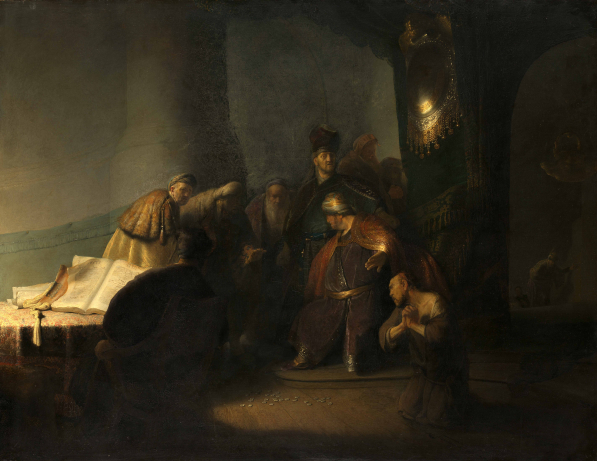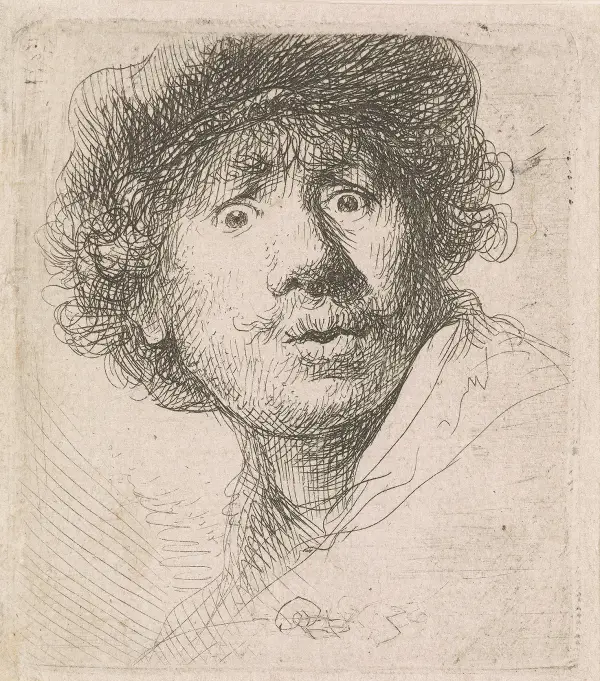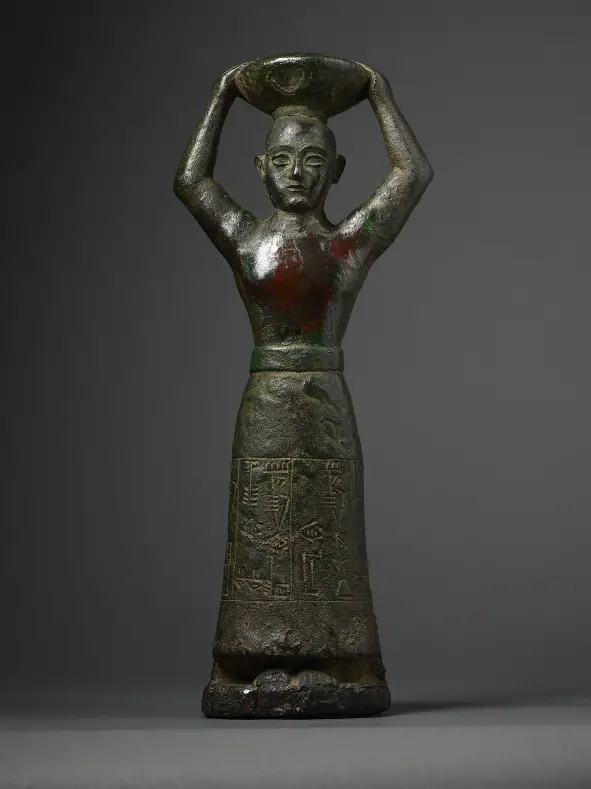In the art historian world, Rembrandt van Rijn’s Judas Returning the Thirty Pieces of Silver, completed in 1629 at the tender age of 23, is regarded as the "business card" work of Rembrandt's career says Per Rumberg, who conceived the Morgan Library & Museum’s brand new exhibit, Rembrandt’s First Masterpiece, open June 3 through Sept. 18. Long held in a private British collection, this marks the painting’s debut showing in the United States.

Rembrandt van Rijn (1606-1669), Judas Returning the Thirty Pieces of Silver, 1629. Oil on panel. Private collection. © Private Collection, Photography courtesy of The National Gallery, London, 2016.

The emotionally charged painting of Judas repenting after betraying Jesus, throwing silver coins at the feet of Roman temple priests, is one of the few Rembrandt pieces that has surviving preparatory drawings. Rembrandt worked and revised tirelessly, perhaps as long a year, on the piece. He shunned symmetry, opting to work asymmetrically, using lighting, texture of subjects (metals, fabrics), and facial expressions to make his paintings leap from the canvas.
The exhibit offers an eye over the shoulder perspective of the artist, including a series of never before seen preparatory drawings, as well as numerous early, evolving self portraits of the artist, plus additional artists’ works inspired by Rembrandt.

Rembrandt van Rijn (1606-1669), Self-Portrait in a Cap, Wide-Eyed and Open-Mouthed, 1630, Etching and drypoint, state II (of II). The Morgan Library & Museum.
The life of Christ figured prominently throughout Rembrandt’s work, though at the time this choice of subject matter was unusual. He was constantly rethinking his narrative and style, sometimes devising new versions of subjects taken years earlier. “He, like many of his contemporaries, aspired to be a painter of history and looked for inspiration to well-known religious subjects, as well as mythology and Greek and Roman history,” says Colin B. Bailey, director of the Morgan Library & Museum.
Over his 30+ year career, Rembrandt completed somewhere around 200 works. The Dutch diplomat and art lover Constantijn Huygens played a pivotal role in launching Rembrandt’s career, seeing his potential when he was just an up and coming 20 year old, then beardless. The exhibit includes Huygen’s autobiography (on loan from the Royal Library in the Hague) where he wrote high praises (in Latin) of Rembrandt’s talents. "The gesture of that one, despairing, maddened Judas...begging for forgiveness, but devoid of hope...his garments rent...a blind impulse has brought him to his knees...I am struck with amazement. All honor to thee, Rembrandt!"
Throughout the summer, The Morgan will be offering various adult sketching workshops in the gallery, where you can channel your inner artist (June 11, July 9, August 13, and Sept. 10).
Per Rumberg is now Curator of Exhibitions at the Royal Academy, London, and formerly Associate Curator at the Morgan. The installation at the Morgan has been overseen by John Marciari, Charles W. Engelhard Curator and Head of the Department of Drawings and Prints, and by Ilona van Tuinen, Assistant Curator of Drawings and Prints.
After visiting Rembrandt go next door and take a walk way, way back in time to view Founding Figures: Copper Sculpture from Ancient Mesopotamia ca. 3300-2000 B.C. This exhibit focuses on one of the powerful figures in ancient Near Eastern Art, King Ur-Namma (2112-2094 B.C.). The regal-yet-naturally-posed, intricately crafted copper figurines were not created to be seen by mortal eyes. Often placed at the foundation of buildings, they were only intended to protect the spaces from evil spirits, and be appreciated by the gods. The Metropolitan Museum of Art, the Yale Babylonian Collection, and private collectors have also loaned objects. This exhibit, curated by Sidney Babcock, will run through Aug. 21.

Neo-Sumerian, Ur III period, reign of Ur-Namma, ca. 2112–2094 B.C. Inscribed
in Sumerian, Ur-Namma, King of Ur, King of Sumer and Akkad, who built the temple
of Enlil. Copper alloy, H: 33.5 ∞ W: 13 cm. The Morgan Library & Museum, purchased
by Pierpont Morgan, 1907.
For more information, visit themorgan.org.





